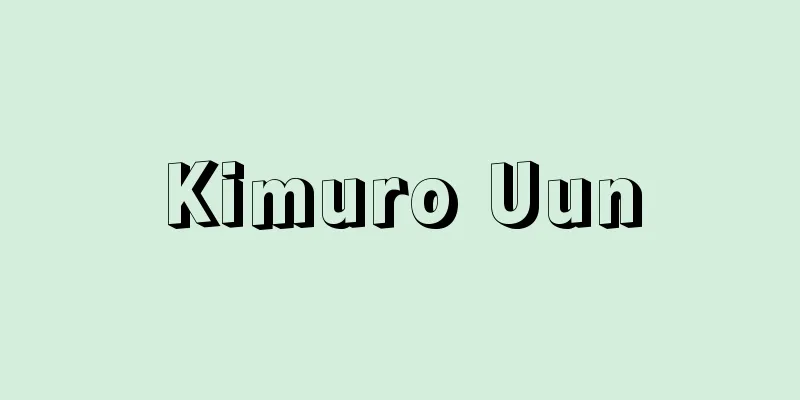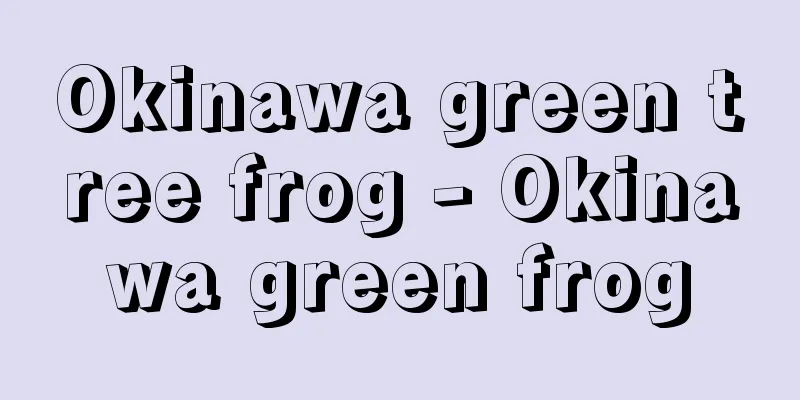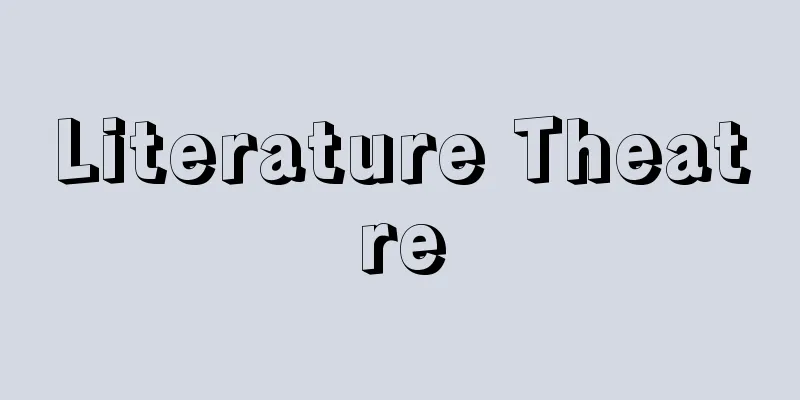Kimuro Uun

|
Year of death: June 28, 1783 (July 27, 1783) Year of birth: 1714 A writer of kyoka and rakugo from the Edo period. His name was Choto, he was commonly known as Shinshichiro, and his other name was Shirakoikan. He was a shogunate official, and first lived in Edo Bancho, and later in Shitaya. He served as Okamoto Metsuke, Kofushinkata, Ohiroshiki no Kami, and so on. When he was young, he studied haiku under Keikiitsu, and his portrait and haiku were published in Edo no Sachi (1774), edited by Hidekuni. He was fond of kyoka, and in 1765 (Meiwa 2), he was on duty in Kyoto, where he interacted with Kurikatei Kibata and Kyunyokan Don'ei. His skill was such that in 1765, he was promoted to the head of the Ohiroshiki no Kami after composing the poem "If you're black-skinned and red-haired, you'll be the head of the ban." In 1776 (An'ei 5), his son Ai-mei collected all his kyoka up to that point and published it under the title Kyokashu (Collection of Today's Poems). After Shikata Akayoshi (Ota Nanpo) visited Uun and wrote, "I wonder if he is an old man living in Shita-ya whose kyoka poems resonate to the ceiling," Uun's relationship with the Tenmei kyoka circle began, and 24 of his poems were included in the Manzai Kyokashu (Collection of Kyoka) of 1783. He can be said to have been a great elder among kyoka writers who participated in the Tenmei style, even before the Edo kyoka. He is also known as the author of the storybook Kanokomochi (1772). <References> Hamada Giichiro, "Thoughts on Shirakoikan Uun" (Edo Literary Studies) (Yutaka Sonoda) Source: Asahi Japanese Historical Biography: Asahi Shimbun Publications Inc. About Asahi Japanese Historical Biography |
|
没年:天明3.6.28(1783.7.27) 生年:正徳4(1714) 江戸時代の狂歌・噺本作者。名は朝濤,通称は新七郎,別号は白鯉館。幕臣で,初め江戸番町,のちに下谷に住んだ。御徒目付,小普請方,御広敷番頭などを歴任。若いころ,慶紀逸に俳諧を学び,秀国編の『江戸の幸』(1774)には肖像と句が載る。狂歌をたしなみ,明和2(1765)年京都出役の折には栗柯亭木端や九如館鈍永と交わる。その腕前は,明和5年に「色くろくあたまの赤きわれなればばんの頭になりそうなもの」と詠んで,御広敷番の頭に昇進したと伝えられるほどであった。安永5(1776)年に,それまでの狂歌を子息の藍明が集めて『今日歌集』と題して刊行した。四方赤良(大田南畝)が「狂歌をば天井までもひびかせて下谷にすめる翁とはばや」と詠んで卯雲のもとを訪れてからは,天明狂歌壇との交際も始まり,天明3(1783)年の『万載狂歌集』には24首入集している。江戸狂歌以前からの狂歌作者で天明調に参加した大長老といえよう。また,噺本『鹿の子餅』(1772)の作者としても知られている。<参考文献>浜田義一郎「白鯉館卯雲考」(『江戸文芸攷』) (園田豊) 出典 朝日日本歴史人物事典:(株)朝日新聞出版朝日日本歴史人物事典について 情報 |
<<: Registered securities/Bearer securities - Kimeishokenmu Kimeishoken
Recommend
Falstaff, Sir John
A famous comic character who appears in Shakespear...
Chisso Co., Ltd. - Chisso
A chemical fertilizer company. Noguchi Tsune (1873...
Counterweight - Counterweight
...The first modern elevator in Japan was install...
Khadi - Qāī (English spelling)
A judge who hears civil and criminal cases based ...
Wang Hong-xu (English: Wang Hung-hsü)
[Born] Junji 2 (1645) [Died] Yongzheng 1 (1723) A ...
Radio Corporation of America
…Headquarters: New York. The company was founded ...
Enemy
Aesthetic sense in the late Edo period. Shikitei S...
Seedlings
It refers to a relatively young plant body used f...
Kikuta Pass - Kikuta Pass
An old name for Nakoso Pass . Source: The Selected...
Hydroforming
...To prevent this, the reaction is carried out b...
White-tailed deer
It is an animal of the Cervidae family of the ord...
Hitotsume Kozou
A one-eyed monster. In most legends, he is a boy ...
SOV type - SOV type
...This type of honorific speech developed in the...
ḥalif (English spelling) halif
…But the actual group called Banu usually contain...
Tanaka Chigaku
A religious leader from the Meiji to Showa period...









